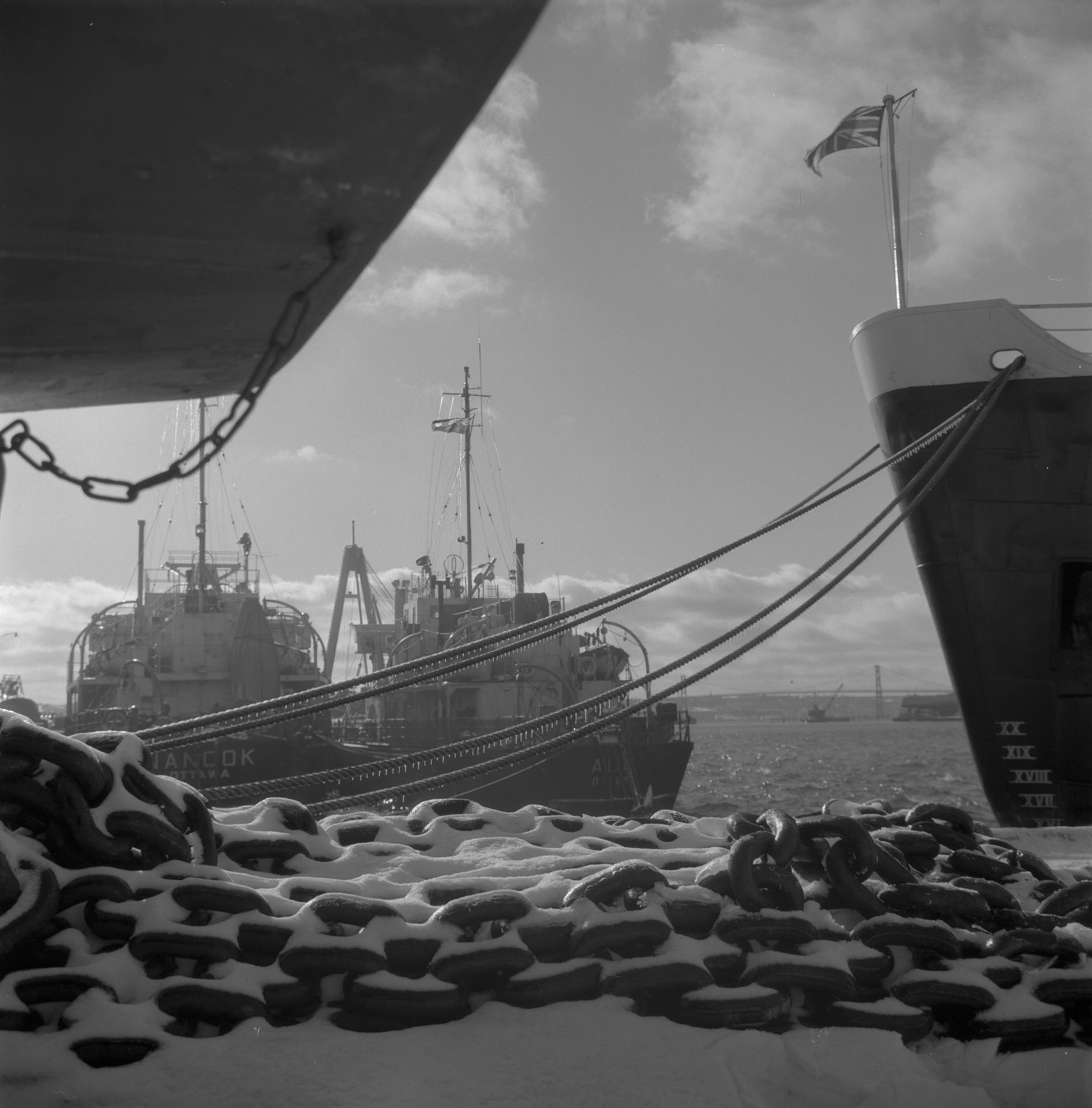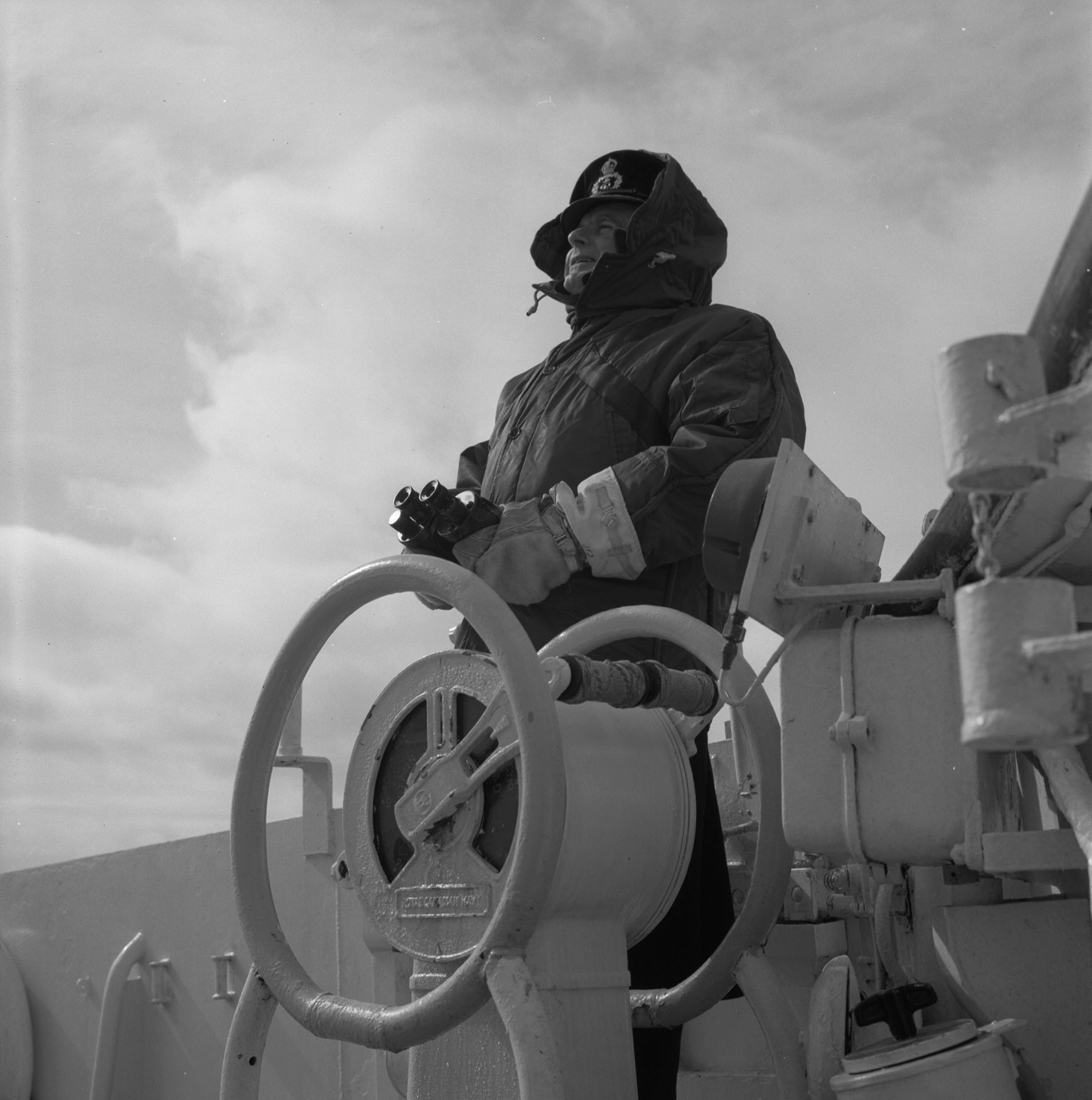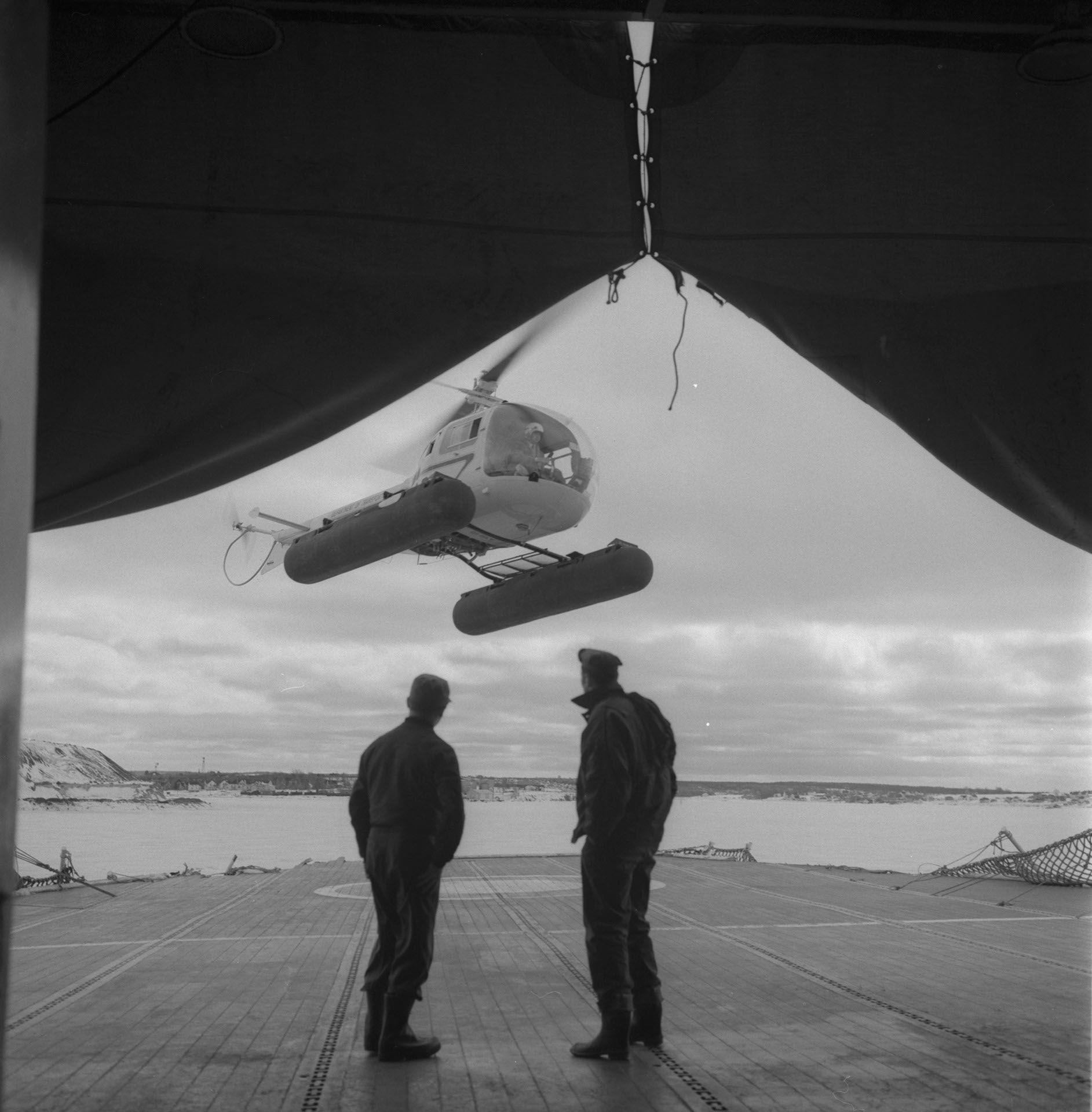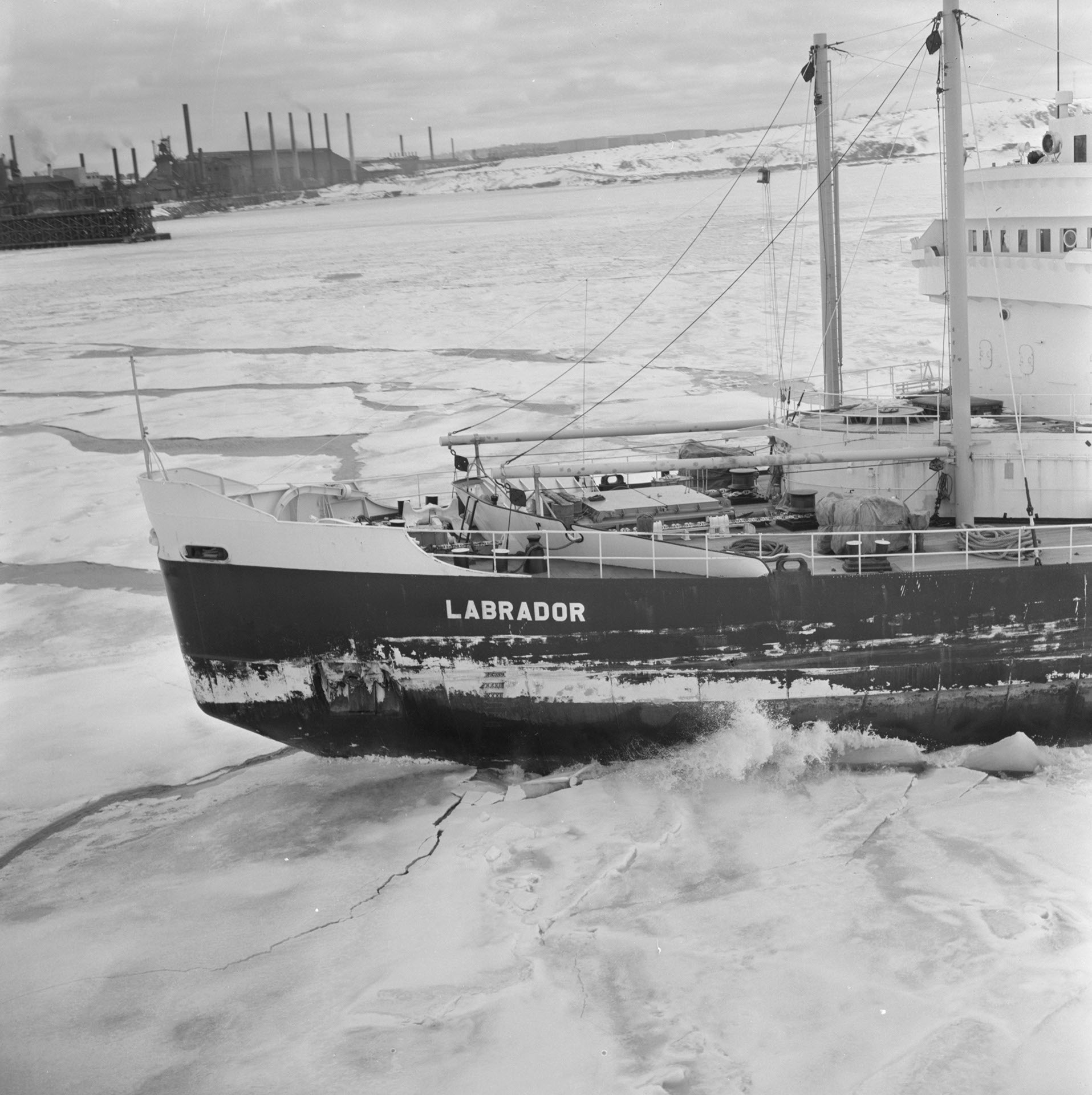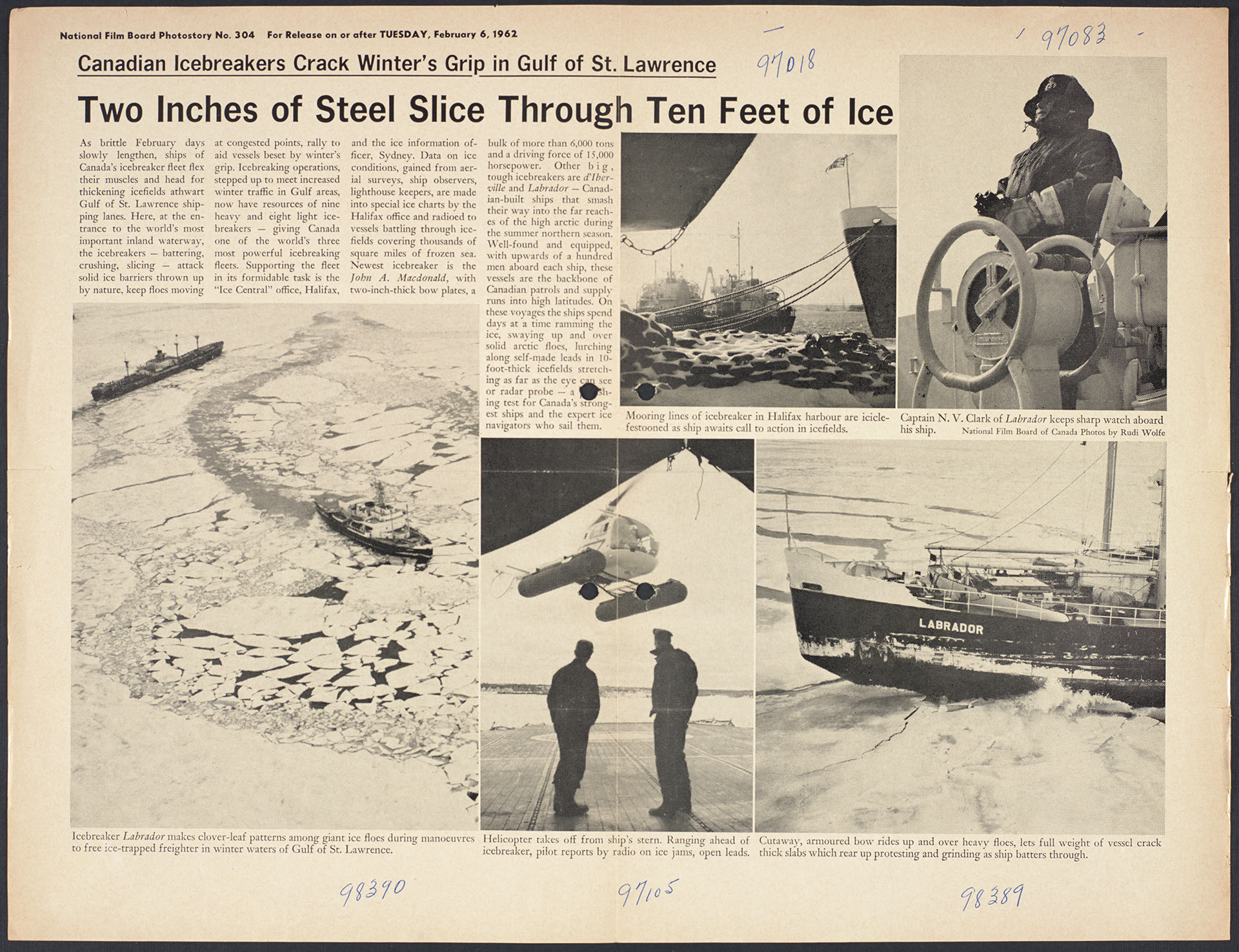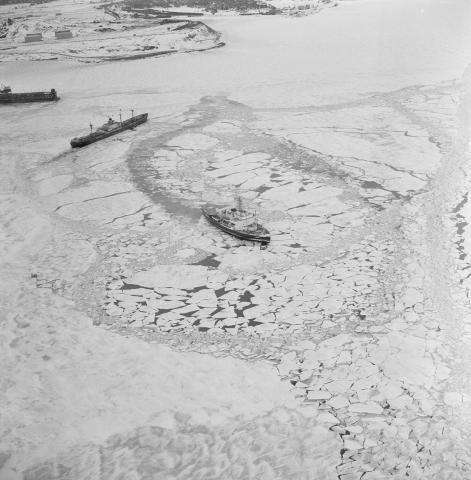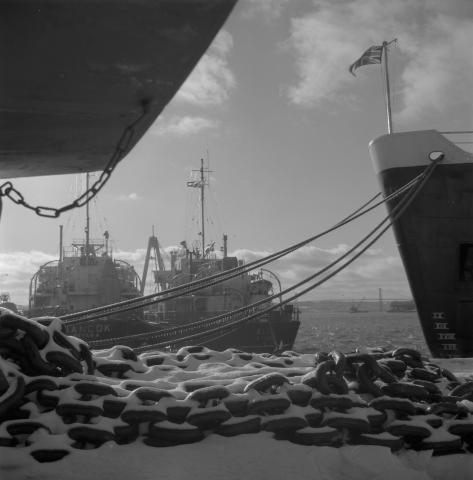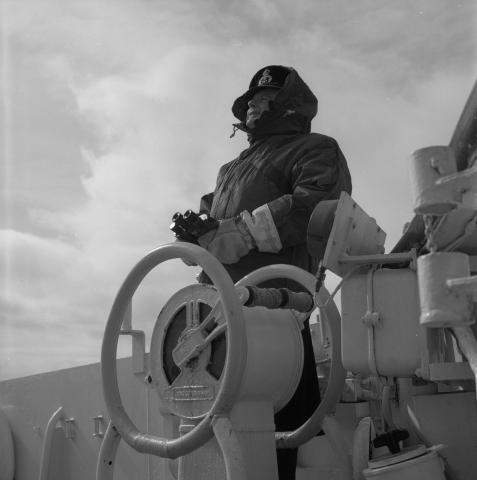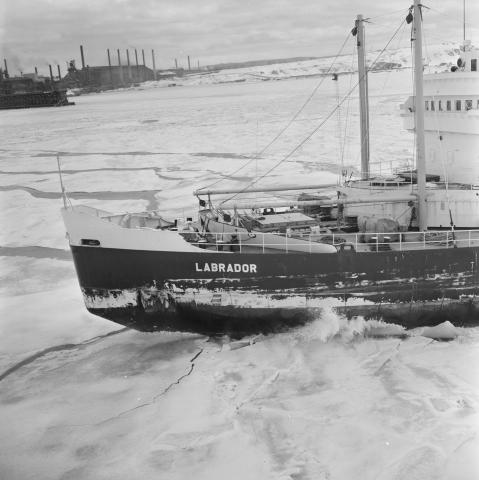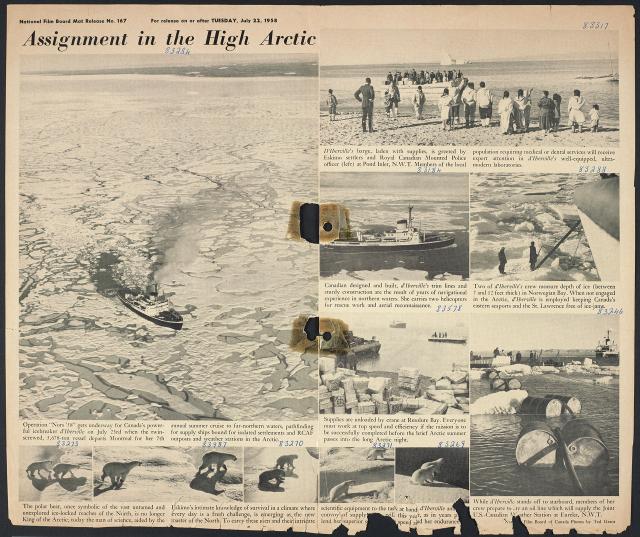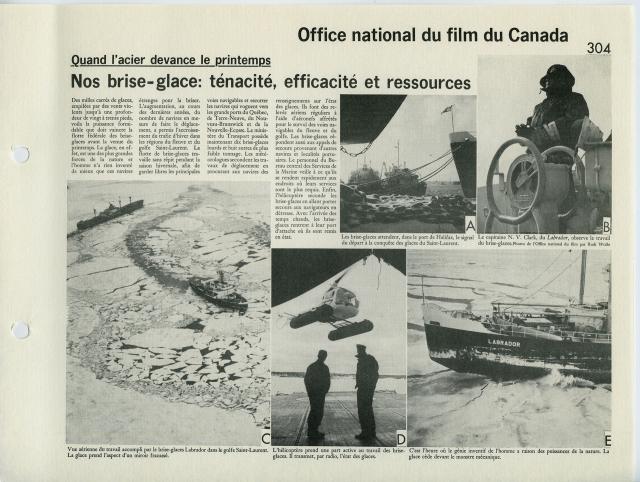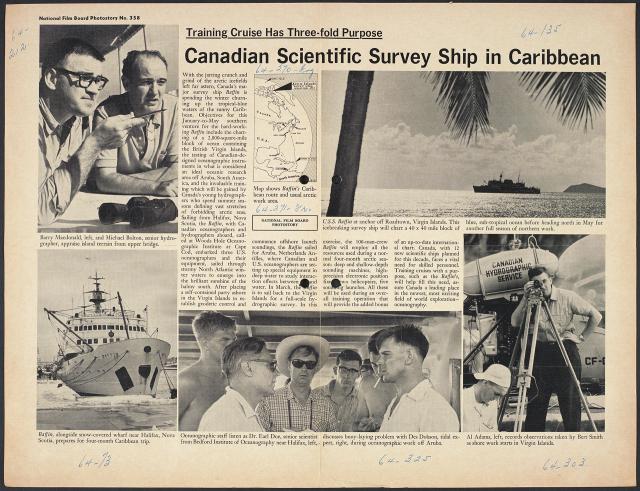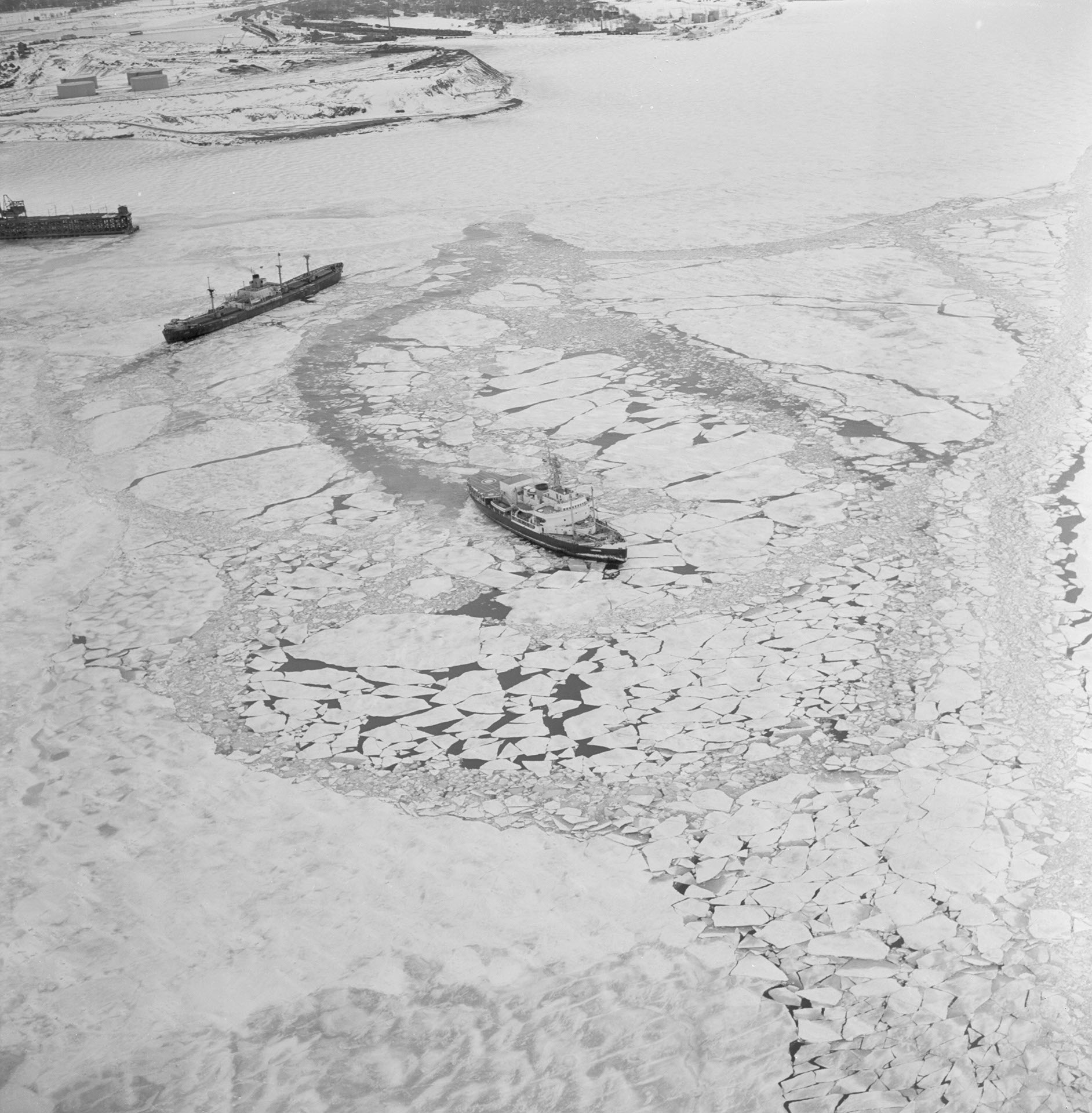
Photostory #304: Canadian Icebreakers Crack Winter's Grip in Gulf of St. Lawrence: Two Inches of Steel Slice Through Ten Feet of Ice
Photographers
,
Maker
National Film Board of Canada
Release Date
February 6, 1962
Collection
CMCP fonds
Credit Line
Canadian Museum of Contemporary Photography fonds, National Gallery of Canada Library and Archives
Main Text
As brittle February days slowly lengthen, ships of Canada's icebreaker fleet flex their muscles and head for thickening icefields athwart Gulf of St. Lawrence shipping lanes. Here, at the entrance to the world's most important inland waterway, the icebreakers -- battering, crushing, slicing -- attack solid ice barriers thrown up by nature, keep floes moving at congested points, rally to aid vessels beset by winter's grip. Icebreaking operations, stepped up to meet increased winter traffic in Gulf areas, now have resources of nine heavy and eight light icebreakers -- giving Canada one of the world's three most powerful icebreaking fleets. Supporting the fleet in its formidable task is the "Ice Central" office, Halifax, and the ice information officer, Sydney. Data on ice conditions, gained from aerial surveys, ship observers, lighthouse keepers, are made into special ice charts by the Halifax office and radioed to vessels battling through icefields covering thousands of square miles of frozen sea. Newest icebreaker is the John A. Macdonald, with two-inch-thick bow plates, a bulk of more than 6,000 tons and a driving force of 15,000 horsepower. Other big, tough icebreakers are d'Iberville and Labrador -- Canadian-built ships that smash their way into the far reaches of the high arctic during the summer northern season. Well-found and equipped, with upwards of a hundred men aboard each ship, these vessels are the backbone of Canadian patrols and supply runs into high latitudes. On these voyages the ships spend days at a time ramming the ice, swaying up and over solid arctic floes, lurching along self-made leads in 10-foot-thick icefields stretching as far as the eye can see or radar probe -- a punishing test for Canada's strongest ships and the expert ice navigators who sail them.
Subjects:
Locations:

